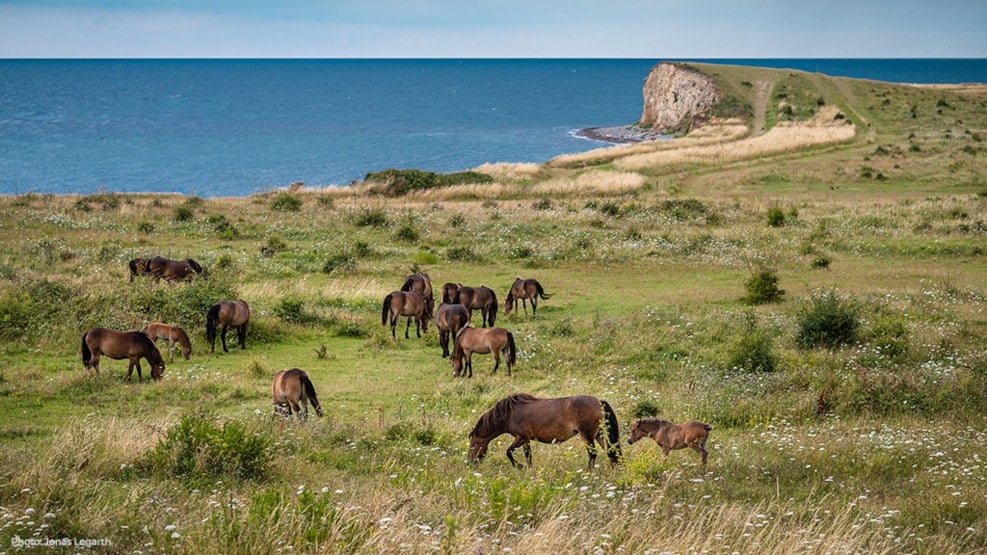
The Wild Horses - Gulstav Mose
The south tip of Langeland is home to a large nature reserve with open grasslands, lakes and ponds, wetlands, woodland and cliffs. Here you can encounter a herd of “wild” Exmoor ponies, which fend for themselves all year around - almost completely without interference from man.
It is something really special to see a herd of up to 60 wild horses, with both stallions and mares of all ages. You can see both foals and mating behaviour throughout the spring and summer, with the high season being April and May.
They are given straw and hay to eat during hard winter weather, and somebody is always keeping an eye on them so if one of the horses falls ill, a vet will be called. They live in a herd of around 60 adult horses, with a lead stallion and a lead mare. The lead stallion is replaced regularly, to prevent inbreeding. The last time this occurred was in 2019.

Exmoor Ponies
It is believed that the last wild horses in Europe died out around 1870. Recent research has shown that Exmoor ponies are modern the race of horse that is genetically closest to the original wild horses.
An Exmoor pony is circa 130cm high, with a broad body and muscular, black legs. Their coats are brown in colour. Its winter coat made up of both short “wooly” hairs and longer “guard” hairs and in fact this winter coat can be so thick that snow can lie on the back of a pony without melting.

The area over which the horses roam is fenced-in, but there is open access for visitors all year round.
The herd can nearly always be seen fro the hat-hill “Ørnehøj” (Eagle-Hill), which is a short walk from the car park next to Gulstav Mose on the road Gulstavvej.
Remember these 5 points when you enter the horse’s enclosure:
- Keep your distance from the horses – at least 25 meters
- Do not touch or feed the horses
- Refrain from walking between the animals. Always make sure you give them room to move freely
- Leave the foals in peace
- Keep your dog on a short leash - or don't take it into the enclosure